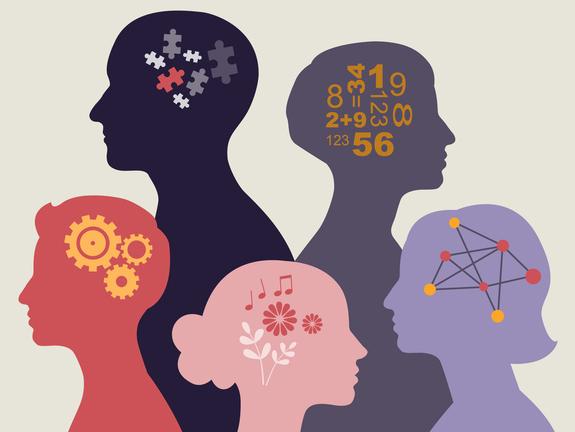
Let’s break down the barriers blocking neurodivergent people from higher education
Neurodivergent students face barriers when accessing higher education, including negative attitudes of faculty members, lack of assistive technology, traditional teaching methods and inflexible curricula. All these factors can compromise academic and social development, as well as participation.
Neurodiversity, an umbrella term for neurological differences as a result of autism, ADHD, dyslexia, dyscalculia and many other conditions, describes a natural variation of the human brain rather than a deficiency.
Talking about neurodiversity in academia
Of course, we want to talk about neurodivergent people with respectful language. But sometimes, opting for “identity-first” or “person-first” language can be difficult. Although professionals and textbooks may prefer to use person-first language, such as “individual with autism”, the person in question may be likely to be referred to as “identity-first”, such as “autistic person”.
- On the neurodivergent campus, language matters
- Five steps to support autistic students on their higher education journey
- What universities can do to support their autistic employees
Avoid language that implies judgement or value, such as describing neurodivergent traits as problems. Instead, we should focus on accommodating the needs of neurodivergent students.
Although neurological differences are now recognised as natural human variations, higher education’s service delivery level still operates as if they are a deficiency. Neurodivergent students can start university education with a negative perspective shaped by their past experiences. Universities must be proactive and provide reasonable accommodations for these students based on their preferences.
In higher education, students should feel empowered to voice their opinions and request the support they need to achieve their full potential.
Consider alternative examinations
We should encourage higher education institutions to adopt inclusive pedagogies and universal design for learning, along with flexible and multiple assessment formats. Social interactions and a sense of belonging are crucial for learning.
Unfortunately, faculty members can have a negative attitude towards training on issues related to neurodiversity and accommodating students. Reflect critically on your teaching practices – are they built from neuro-normative perspectives?
Offer alternatives to traditional assessment methods. These can include:
- Project-based: Projects are designed around questions or problems that guide students towards understanding the core principles of a discipline.
- Portfolio assessments: Students are encouraged to collect their work over a period of time to showcase their progress, skills and potential in a specific subject or area.
- Oral presentations: Oral presentations are a great way of equitably offering an alternative to the written examination. They allow students to demonstrate knowledge without the pressure of written expression. However, instructors must collaborate with students and provide clear guidelines and expectations.
- Open-book exams: In this type of assessment, students are permitted to use resources such as notes, textbooks and sometimes other approved materials during the exam. They focus on students’ ability to analyse information, preparing them for real-world problem-solving where resources are often accessible.
- Flexible testing: Students have the choice to select multiple assessment strategies to demonstrate their knowledge, such as the format of the assessment, timing or location. This approach can reduce anxiety, accommodate diverse learning styles, and promote deeper understanding by focusing on applying knowledge.
- Alternative environments: An alternative climate aims to create a barrier-free learning environment that promotes broader participation, engagement and an individualised approach. Alternative environments often embrace hands-on learning and student-centred instruction.
- Practical examinations: They can be excellent assessment tools for students with neurodiversity, offering a chance to demonstrate knowledge through hands-on application and bypass challenges associated with written exams or traditional testing formats. Offer clear instructions, break down tasks into manageable steps and consider the possibility of providing alternative demonstration methods for students who might need them.
- Customised rubrics: These are scoring guides tailored to specific assignments or projects. They offer clear expectations for students, make grading more transparent and provide a framework for targeted feedback. It is important to highlight that customised rubrics need to be aligned with learning objectives.
- Self-assessment: Students are encouraged to evaluate their own work and understanding actively. They compare their work with clear goals and standards, identifying strengths, weaknesses and areas for improvement. This process promotes student ownership of learning, critical thinking skills and increased motivation.
Most importantly, consult students to find out what they need and the accommodations they might require in the examination process.
Start from the top down
We need university leadership that recognises neurodiversity and promotes inclusive initiatives to ensure neurodivergent students participate from the admissions process onwards.
Foster a holistic approach to admissions, with outreach to neurodivergent communities. Make it accessible and non-discriminatory, with flexible application requirements. Ensure it’s run by trained admissions staff and features accessible communication channels, precise information, individualised counselling and feedback mechanisms.
Collaborate with disability support services, creating opportunities for peer support, awareness training and empowerment seminars. Offer students tailored transition programmes, specialised career services and continuous feedback for improvement. Creating an inclusive environment in this way will enrich the educational experience for all students and help everyone embrace and celebrate neurodiversity.
Sourav Mukhopadhyay is an associate professor at the Graduate School of Education at Nazarbayev University.
If you would like advice and insight from academics and university staff delivered directly to your inbox each week, sign up for the Campus newsletter.




